As simple as it sounds, looking for baby clothes is tedious. Ask any parent, and they will have numerous stories to tell how they got the wrong size, especially when they ordered online.
In theory, looking for the right-size baby outfits should be easy since the baby clothes are sorted by age. The pieces should correspond to your baby’s age, and that should be it. Practically, that’s not the case.
Just like us adults, infants come in all shapes and sizes, which is why no one size fits all.
Moreover, different brands of baby apparel are not consistently sized. If you struggle to find the right size of baby clothes, read this guide.
Size Matters: Buying Baby Clothes Like a Pro
| Brand Size | Newborn | 0-3m | 3-6m | 6-9m | 9-12m | 12-18m | 18-24m (2T) |
|---|---|---|---|---|---|---|---|
| US Size | NB | 3M | 6M | 9M | 12M | 18M | 24M |
| Height (in) | 18.1-21.5 | 21.5-24.0 | 24.0-27.0 | 27.0-28.5 | 28.5-30.0 | 30.0-32.5 | 32.5-35.0 |
| Weight (lb) | 6-8.8 | 8.8-12.6 | 12.6-16.5 | 16.5-20.5 | 20.5-24.5 | 24.5-27.6 | 27.6-30 |
| Chest (in) | 17-17.5 | 17.5-18 | 18-18.5 | 18.5-19 | 19-19.5 | 19.5-20.5 | 20.5-22 |
| Waist (in) | 17-17.5 | 17.5-18 | 18-18.5 | 18.5-19 | 19-19.5 | 19.5-20.5 | 20.5-22 |
*Data based from Centers for Disease Control and Prevention – Growth Charts

| Brand Size | 3Y (3T) | 3-4Y (4T) | 4-5Y (5T) | 5-6Y (6T) | 6-7Y | 7-8Y | 8-9Y | 9-10Y |
|---|---|---|---|---|---|---|---|---|
| US Size | 3T | 4T | 5T | 6T | 7 | 8 | 9 | 10 |
| Height (in) | 35.0-39.0 | 39.0-41.0 | 41.0-43.5 | 43.5-46.0 | 46.0-48.0 | 48.0-50.5 | 50.5-53.0 | 53.0-55.0 |
| Weight (lb) | 30-34.2 | 33-39.6 | 37.5-44 | 42-48.5 | 46.3-57.3 | 52.9-63.9 | 59.5-70.5 | 66-79.4 |
| Chest (in) | 22.2-22.5 | 22.4-23 | 23-24 | 24-25 | 25-25.5 | 25.5-26.5 | 26.5-27.5 | 27.5-28.5 |
| Waist (in) | 20.5-21 | 21-22 | 22-22.5 | 22.4-23 | 23-24 | 24-24.5 | 24.5-25 | 25-26 |
*Data based from Centers for Disease Control and Prevention – Growth Charts of Boys

| Brand Size | 3Y (3T) | 3-4Y (4T) | 4-5Y (5T) | 5-6Y (6T) | 6-7Y | 7-8Y | 8-9Y | 9-10Y |
|---|---|---|---|---|---|---|---|---|
| US Size | 3T | 4T | 5T | 6T | 7 | 8 | 9 | 10 |
| Height (in) | 35.0-39.0 | 39.0-41.0 | 41.0-43.5 | 43.5-46.0 | 46.0-48.0 | 48.0-50.5 | 50.5-53.0 | 53.0-55.0 |
| Weight (lb) | 30-34.2 | 33-39.6 | 37.5-44 | 42-48.5 | 46.3-57.3 | 52.9-63.9 | 59.5-70.5 | 66-79.4 |
| Chest (in) | 22.2-22.5 | 22.4-23 | 23-24 | 24-25 | 25-26 | 26-27 | 27-28 | 28-29 |
| Waist (in) | 20.5-21 | 21-21.5 | 21.5-22 | 22-22.5 | 22.5-23 | 23-23.5 | 23.5-24 | 24-25 |
*Data based from Centers for Disease Control and Prevention – Growth Charts of Girls
Newborn Baby Clothes Sizes
When looking for cute clothes for your newborn baby, you must stock up the wardrobe with the right size. Commonly, a newborn size should fit a newborn, but it’s better to size up a bit.
You can always wait for the baby to grow into those clothes if they are bigger. Baby apparel short on the baby will most likely go to waste.
Normally, ‘newborn clothes‘ fit babies up to 8 pounds in size. You’ll be amazed to see how quickly they outgrow clothes. Also, some babies enter the world larger than that size.
The bottom line is that a 0-3 months size should comfortably fit your baby for up to 12 pounds. You can always roll the sleeves or romper legs for a few weeks; that’s how long a baby would take to grow into a bigger size.
Note: Ideally, a preemie or newborn size would fit a premature baby. Keep the tags on the baby apparel and hang on to the receipts if you are expecting a premature or petite baby.
The Relationship Between American and European Baby Clothes Sizes
Imagine this: you get an adorable baby outfit gifted, a little skeptical about the size, and you have a look at the tag that says 70. Sounds confusing, right? Just when you thought you understood baby clothing sizes, the European sizing system hits you.
The European baby clothing sizes are based on maximum centimeters in height, meaning a size 70 should fit a baby 70 cm long. To be precise, you must review the brand’s size chart.
Looking for what sizes 60, 70, 80, and 90 mean in baby clothes? Check the chart below for a quick comparison between European and U.S. baby clothing sizes.
| European Size | U.S. Size | Age Range | Weight Range (lbs) | Height Range (in) |
|---|---|---|---|---|
| 50 | Newborn (NB) | 0-1 months | 5-8 | 18-22 |
| 60 | 3-6 months | 3-6 months | 12-16 | 22-26 |
| 70 | 6-12 months | 6-12 months | 16-20 | 26-28 |
| 80 | 12-24 months | 12-24 months | 20-27 | 28-32 |
| 90 | 2T | 2 years | 26-33 | 32-36 |
| 100 | 3T | 3 years | 31-38 | 36-40 |
Here Are the Comprehensive Details of How European Sizes Compare to U.S. Sizes
- Euro Size 60 in Baby Clothes: roughly translates to a U.S. size for babies aged 3-6 months. It fits babies weighing 12-16 pounds and measuring 22-26 inches in height.
- Euro Size 70 in Baby Clothes: corresponds to a U.S. size for babies aged 6-12 months. This size fits babies weighing 16-20 pounds and measuring 26-28 inches in height.
- Euro Size 80 in Baby Clothes: equivalent to a U.S. size for babies aged 12-24 months. It is suitable for babies weighing 20-27 pounds and measuring 28-32 inches in height.
- Euro Size 90 in Baby Clothes: equates to a U.S. size 2T, which is ideal for toddlers weighing 26-33 pounds and standing about 36 inches tall.
- Euro Size 2T in Baby Clothes: In the U.S., 2T refers to toddlers aged 2-3 years, weighing 29-32 pounds and measuring about 33.5-35 inches in height.
A Step Beyond Sizing: Additional Tips for Dressing Your Baby
Now that you are aware of the basics of determining the right size for the baby apparel, let’s have a look at some additional tips that make dressing up your baby super easy and fun:
-
Do Your Research, Check The Size Chart
Different baby apparel brands are sized differently; some have smaller or larger sizes, and others may have longer or shorter sizes.
Protip: Visit each brand’s website for a size chart and see where your baby’s measurements fall.
-
Use Soft, Breathable Fabric
A baby’s skin is sensitive, which is why the texture of the fabric is important. Commonly cotton is used to make baby clothes since it is soft, comfortable, safe, and breathable. Parents should pick the best quality baby apparel to avoid rashes or discomfort.
Protip: Always look for clothing apparel that is labeled “100% cotton” or “organic cotton.”

-
Pick Convenience Over Fashion, Always
Convenience is important when it comes to baby clothes. Cute baby clothes with zippers or snap closures are easy to use, especially during diaper changes.
Protip: Babies are impatient little beings; avoid outfits where much buttoning and unbuttoning is to be done.
-
Select Easily Removable Outfits
Look for baby clothes that are simple to put on and take off. Wide necklines or elastic neck openings make changing clothes a breeze.
Protip: Babies tend to mess up clothes frequently, so easily changeable clothing options make the task hassle-free.
-
Go For Onesies
Rompers and sleepers are amazing one-piece, extremely useful clothing that looks super cute. They keep the baby warm from head to toe and save you the hassle of matching the top with the bottom.
Protip: Get onesies for your newborns; they will benefit greatly, especially in cold weather.
-
Get Basics, They Are Trending
Pick basic styles and neutral blends of colors when selecting styles and colors. They are simple to mix and match.
Protip: Go for gender-neutral shades; they come in handy for twins and cover both genders.
-
Shop In Person, The First Time
Shopping in person for baby outfits is beneficial because you physically see if the outfit fits, irrespective of what the tag says.
Protip: When in doubt, always size up; babies grow quickly, so its better to go for clothing that has room for them to grow into.
The Final Say
Familiarizing yourself with baby clothing sizes is like cracking a code and can be tricky. After a little trial and error, once you get the hang of baby clothing sizing, you become a pro at finding out which size best fits your little one.
Ensure you put your babies safely and comfortably above style and fashion while selecting baby clothes. Always remember each baby is different and grows at a different pace.
As your baby grows, be proactive and buy the next sizes beforehand. The same goes for changing seasons. While at it, look at PatPat, a baby clothing brand that always puts comfort, quality, and safety first.



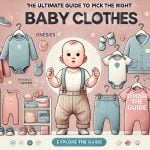
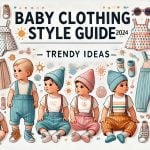
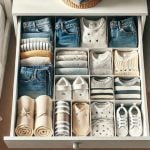
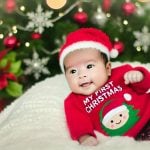

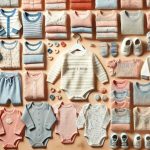
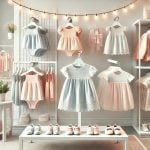
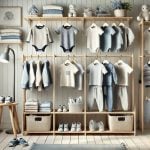





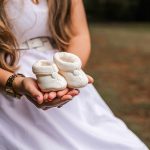
Leave a Reply